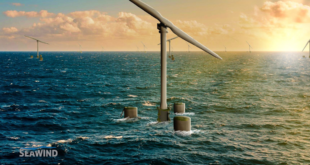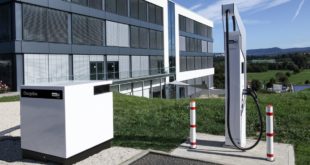
What Is Nuclear Energy?
Nuclear energy is derived from the energy in the core of an atom. Power plants use the process of nuclear fission—the splitting of the atom—to create energy. Some nuclear power plants use uranium atoms. These are split when hit by a neutron, releasing heat and radiation. This atomic collision also releases more neutrons.These neutrons collide with other uranium atoms, and the process repeats itself over and over again.[1] This process is called a nuclear chain reaction and is controlled in nuclear power plants to produce heat. This heat, when combined with water, produces steam which is used to generate electricity people can use at home.
Misconceptions About Nuclear Energy
The word “nuclear” gives a lot people anxiety because the word has a negative connotation. Here are a few common misconceptions about nuclear energy and the truth that lies behind them.
Nuclear Waste
One of the most common misconceptions about nuclear energy is the dangers of nuclear waste. Popular movies and TV shows portray nuclear waste as glowing, green sludge that seeps into local water reservoirs and kills plants and local wildlife. This depiction has embedded misconceptions of danger in the public consciousness.
In reality, nuclear waste is handled under rigorous safety regulations and without harm to the environment or people. The U.S. nuclear energy industry has safely transported used this fuel without any harmful release of radioactivity, injuries or environmental damage. While there have been over 7,000 shipments of used fuel in the United States since 1970, there have been no leaks of radioactive material or personal injuries.[2]
Meltdowns
People associate nuclear energy with destructive power plant meltdowns. This is understandable after well-publicized, high-profile incidents like Fukushima and Chernobyl made the news worldwide.
The truth is that these tragic events are exceedingly rare. In 2012, the United States Nuclear Regulatory Commission (NRC) created a new policy that would further protect nuclear facilities in the event of a natural disasters or unexpected threats. It requires all U.S. nuclear power plants to implement strategies that will allow them to operate without electrical power sources for an indefinite amount of time in case of emergencies. Power plants must keep the reactor core and spent fuel cool and protect the thick concrete containment buildings that surround each reactor.[3]
Safety
Nuclear plants have a well-established track record of safe operation. In the history of U.S. commercial nuclear energy, there have been no radiation-related health effects linked to the operation of nuclear plants.[4] Nuclear energy is considered to be one of the safest industrial working environments in the U.S. and is heavily regulated by the federal government. In order to maintain such stringent safety requirements, nuclear plants must abide by strict standards set forth by the federal government, or else be subjected to fines and/or possibly shut down.
Pros and Cons of Nuclear Energy
Advantages
Carbon Neutral Energy
When compared to other forms of energy, nuclear energy is actually less harmful to the environment and causes less pollution. Nuclear energy doesn’t fall far behind solar and wind when it comes to emissions.
Cheap Source of Electricity
Excluding the initial building costs, nuclear energy is relatively low-cost to generate, allowing many people access to the electricity they need for their daily lives. When compared to energy sources that require fossil fuels, nuclear energy costs far less.
Powerful Source of Energy
The United States produces the most nuclear power—just under 805 billion kilowatt hours of electricity in 2017—enough to power 73 million homes. Commercial nuclear power plants have supplied around 20% of the nation’s electricity each year since 1990.[5] There are a total of 99 nuclear power plants in 30 states, with Illinois, South Carolina, and New Hampshire generating 50% of their power from nuclear facilities.
Advances in Nuclear Technology
As global warming progresses, the energy we use will eventually need to have zero carbon emissions—and nuclear energy may be our one of our best options. Fortunately, technology has made nuclear power safer, cheaper, and more productive than ever before. MIT’s Center for Advanced Nuclear Energy Systems (CANES) has already made great strides in planning for our future and creating better energy alternatives. CANES aims to hasten the development of new and transformative technologies, materials, and methods that will make nuclear fission more affordable, more rapidly and securely deployable, and even safer than it is today.[6]
Disadvantages
The Danger of Accidents
Although accidents are rare, they can still occur. Most people object to having a facility that could cause such catastrophic damage in the rare event of a meltdown. The U.S. government takes extreme caution to prevent an incident from occurring and enforces strict standards. This includes inspectors who remain onsite at all times to ensure that these safety precautions and regulations are being followed to the letter. Although rare, if an accident were to occur, the effects from the radioactive waste in an uncontrolled situation are detrimental to humans and the ecology.
Burden of Nuclear Waste
Nuclear waste is quite toxic, not only to the environment, but humans as well. The disposal of nuclear waste is a burden, as it takes a very careful, thorough, and stringent process. The U.S. government places strict rules and regulations on the proper ways to dispose of the waste ensuring the safest standards, but the process itself takes time, money, and highly-skilled technical training for employees.
Limited Resources
Unlike other energy options, nuclear energy is not renewable. Nuclear energy requires uranium to produce energy and it is not an endless resource. Currently, there’s a plentiful supply of uranium, but one day it will begin to dwindle down, especially if more nuclear energy plants are built, requiring the need for more uranium. Uranium must be mined and sought out, unlike wind or solar power which offers a truly unlimited supply.
Initial Cost
As you can imagine, building a nuclear power plant from scratch can be extremely expensive, There are safety measures to follow, components to secure, and waste to remove and store. Security also plays an important role and has its own associated costs..
The Future of Nuclear Power
Fears of nuclear waste and meltdowns have to be balanced against the threats and realities of global warming. Modern nuclear energy technology is a carbon-neutral solution to the growing worldwide demand for electricity. To make our future a healthier, safer place to live for everyone—all while still generating enough energy for our daily household needs. One key way to make strides toward this future is by switching to alternative energy resources, including nuclear energy. Nuclear energy is a growing industry that offers efficient energy options to businesses and families across the world. With continuous efforts to advance technologies, nuclear energy will become more safer and efficient than it ever has before.
Looking to reduce your footprint today? Sign up for Add JustGreen to your Just Energy electricity or natural gas plan today.
Resources:
- U.S. Energy Information Administration, August 28, 2018, Nuclear Explained, Retrieved From: https://www.eia.gov/energyexplained/index.php?page=nuclear_home
- Nuclear Energy Institute, Nuclear Waste, Retrieved From:
https://www.nei.org/fundamentals/nuclear-waste - United States Nuclear Regulatory Commission, May 8, 2018, Mitigation Strategies, Retrieved From:
https://www.nrc.gov/reactors/operating/ops-experience/japan-dashboard/mitigation-strategies.html - Nuclear Energy Institute, Operational Safety, Retrieved From: https://www.nei.org/fundamentals/safety/operational-safety
- Office of Nuclear Energy, January 16, 2018, 5 Fast Facts About Nuclear Energy, Retrieved From: https://www.energy.gov/ne/articles/5-fast-facts-about-nuclear-energy
- MIT Energy Initiative, Center for Advanced Nuclear Energy Systems, Retrieved From: https://canes.mit.edu/
 #Bizwhiznetwork.com Innovation ΛI |Technology News
#Bizwhiznetwork.com Innovation ΛI |Technology News



